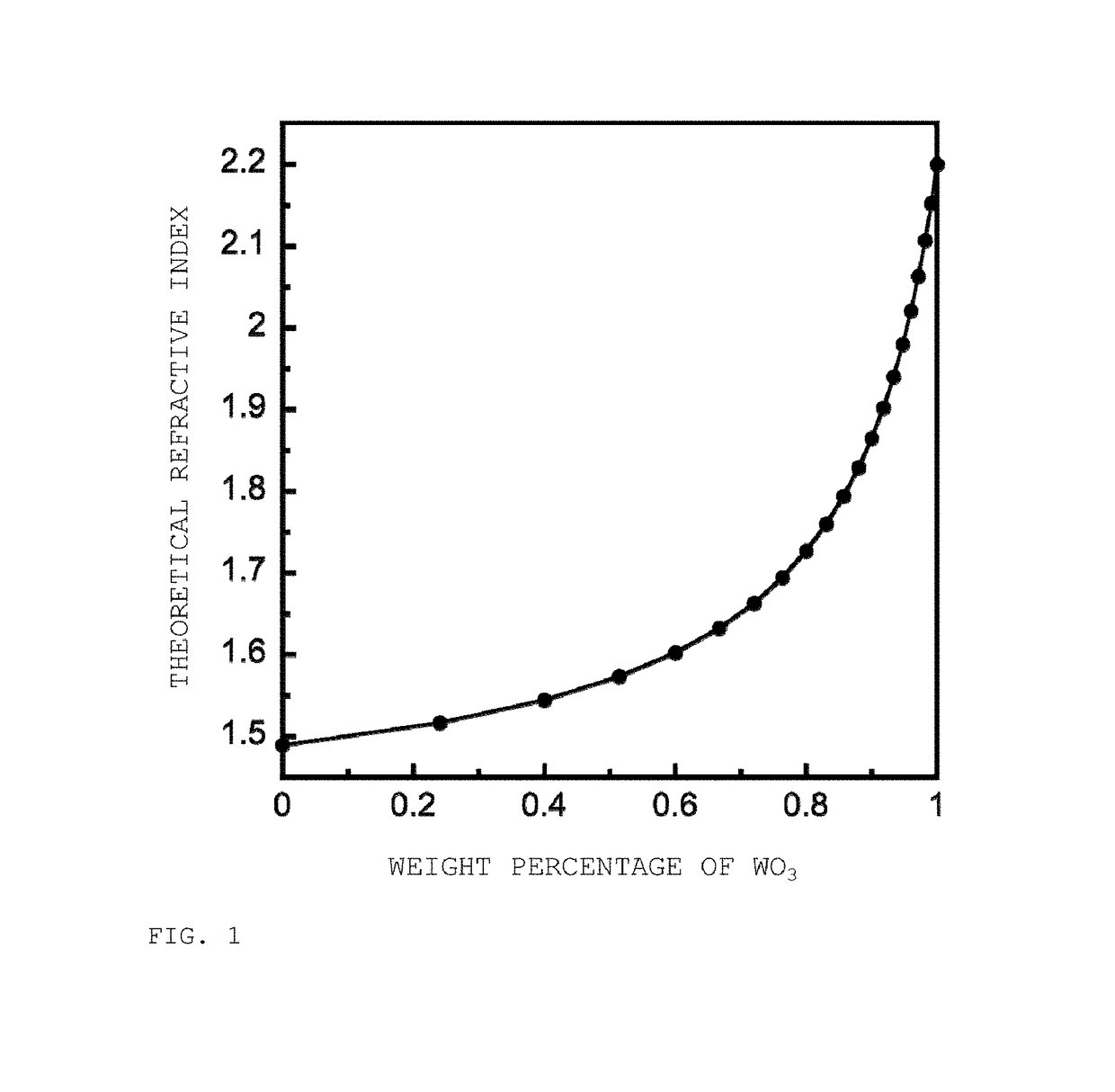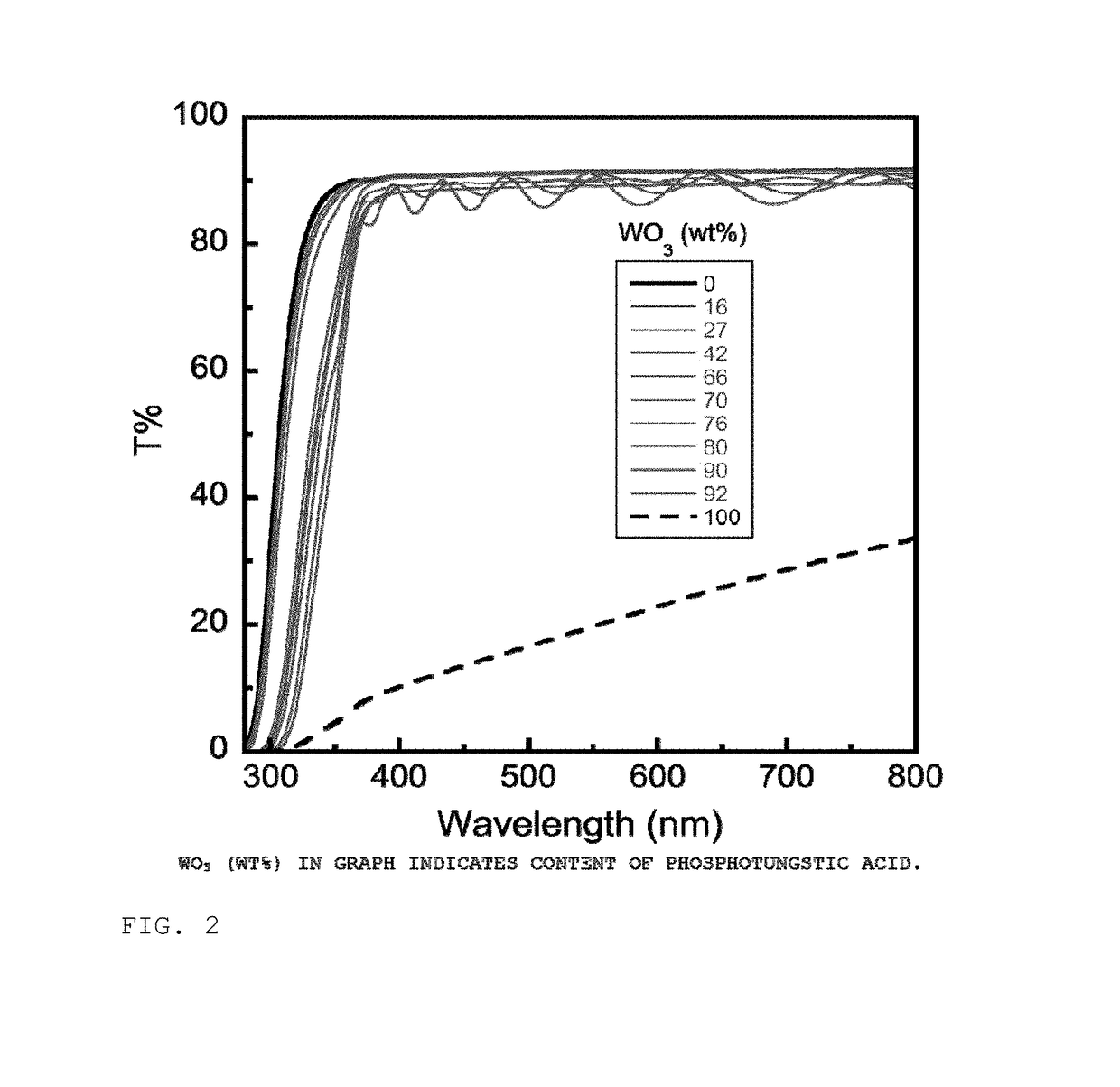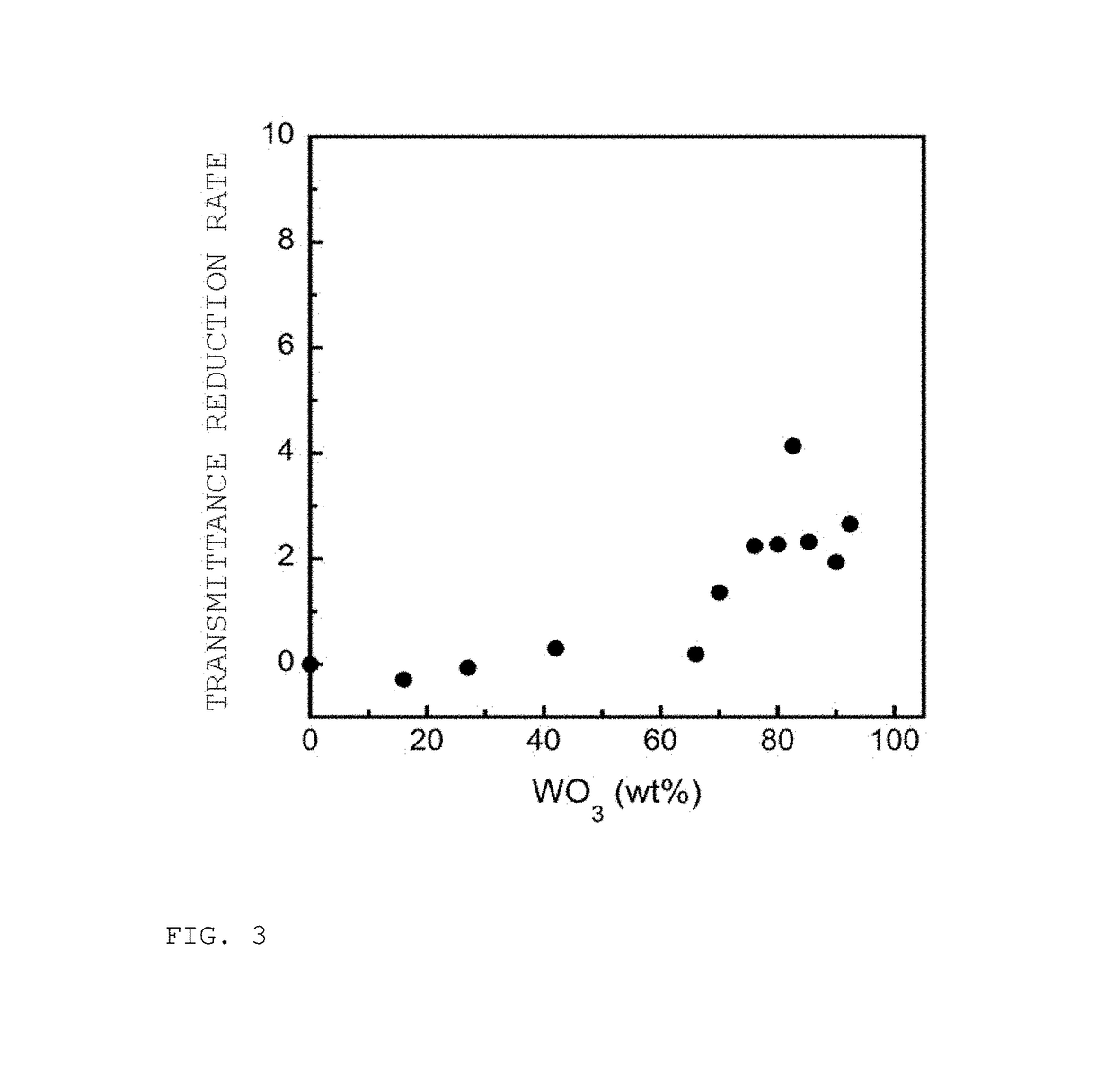Composite of polymer and tungstic acid and/or molybdic acid
a technology of tungstic acid and molybdic acid, which is applied in the field of polymer and tungstic acid and/or molybdic acid, can solve the problems of deterioration over time, difficulty in accommodating molecular design, and difficulty in enhancing functions other than refractive index, and achieves the desired refractive index, high transparency, and easy obtaining
- Summary
- Abstract
- Description
- Claims
- Application Information
AI Technical Summary
Benefits of technology
Problems solved by technology
Method used
Image
Examples
example 1
Composite and Film Production
[0205]Poly(methyl methacrylate) having a number average molecular weight of 120,000 was dissolved in ethyl acetate to prepare a 10% by weight solution of poly(methyl methacrylate), and phosphotungstic acid 30-hydrate (H3[PW12O40].nH2O, n≅30, Mw: 3421 (theoretical value of 30-hydrate), WO3 content: 81 mol %) was dissolved in ethyl acetate to prepare a 40% by weight solution of phosphotungstic acid.
[0206]Both of the resulting solutions were mixed to prepare mixed solutions having phosphotungstic acid contents of 0% by weight to 92% by weight based on the total amount of composite formed. At this time, in the case a solution became cloudy, methanol was added to make it transparent.
[0207]As a result of dropping 100 μL of the prepared mixed solution onto white sheet glass followed by spin-coating under conditions of 1000 rpm and 20 seconds, a composite of poly(methyl methacrylate) and phosphotungstic acid was able to be formed and a film composed of that comp...
examples 2 to 4
Measurement of Refractive Index
[0208]An ethyl acetate solution of phosphotungstic acid (26.5% by weight) and poly(methyl methacrylate) (8.7% by weight) (weight percentage of phosphotungstic acid: 71% by weight (68.6% by weight as the amount of tungstic acid) was prepared according to the same procedure as Example 1. 300 μL of this solution were cast on a glass substrate measuring 2.5 cm×2.5 cm followed by spin-coating at a rotating speed of 500 rpm, 1000 rpm or 2000 rpm to produce films having three types of film thicknesses (Example 2: 5.75 μm, Example 3: 3.97 μm, Example 4: 2.73 μm).
[0209]The refractive index of each of the resulting films was measured at a wavelength of 633 nm based on a value 1.52 for the refractive index of the glass substrate using a prism coupler (SPA-4000, Sairon Technology, Inc.). The results are shown in Table 1.
[0210]Furthermore, in Table 1, theoretical values of the refractive indices were calculated in accordance with the following equation (1). The val...
examples 5 to 13
Measurement of Transmittance
[0218]Each of the films was produced according to the same procedure as Example 1 while changing the content (wt %) of phosphotungstic acid in the ethyl acetate solution so that the content of phosphotungstic acid based on the total amount of composite formed was 16% by weight (Example 5), 27% by weight (Example 6), 42% by weight (Example 7), 66% by weight (Example 8), 70% by weight (Example 9), 76% by weight (Example 10), 80% by weight (Example 11), 90% by weight (Example 12) or 92% by weight (Example 13), respectively.
[0219]In addition, films were also produced to serve as reference examples by preparing so as to have phosphotungstic acid contents (wt %) of 0% by weight and 100% by weight.
[0220]Transmittance was measured for each film using an ultraviolet-visible spectrophotometer (V-560, Jasco Corp.). The results are shown in FIG. 2.
PUM
| Property | Measurement | Unit |
|---|---|---|
| thickness | aaaaa | aaaaa |
| transparent | aaaaa | aaaaa |
| refractive index | aaaaa | aaaaa |
Abstract
Description
Claims
Application Information
 Login to View More
Login to View More - R&D
- Intellectual Property
- Life Sciences
- Materials
- Tech Scout
- Unparalleled Data Quality
- Higher Quality Content
- 60% Fewer Hallucinations
Browse by: Latest US Patents, China's latest patents, Technical Efficacy Thesaurus, Application Domain, Technology Topic, Popular Technical Reports.
© 2025 PatSnap. All rights reserved.Legal|Privacy policy|Modern Slavery Act Transparency Statement|Sitemap|About US| Contact US: help@patsnap.com



